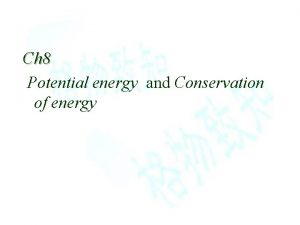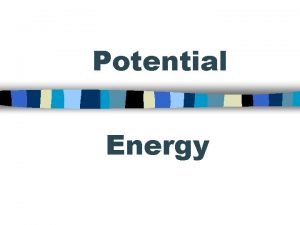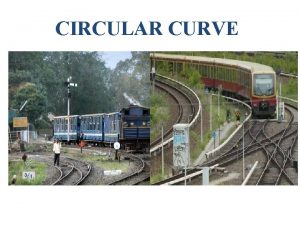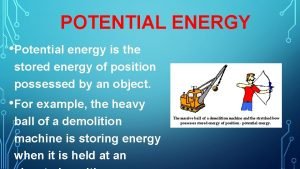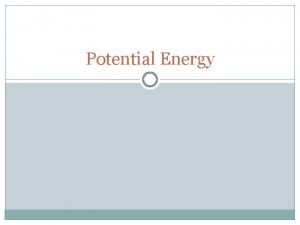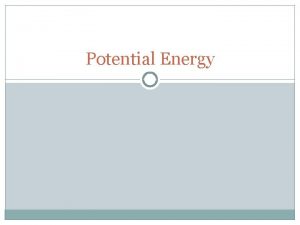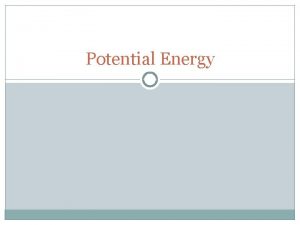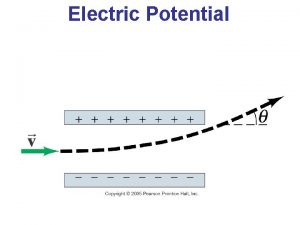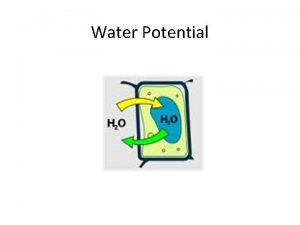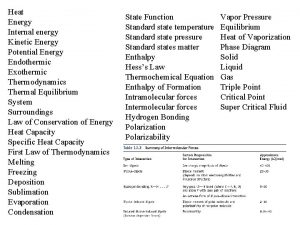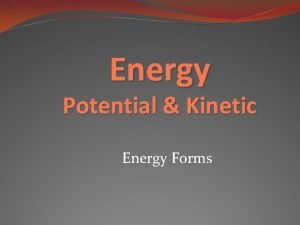Topic Potential Energy Curve Do Now p 26

















- Slides: 17

Topic: Potential Energy Curve Do Now: p. 26

Spontaneous Processes =physical or chemical change that occurs with no outside intervention Iron rusting 4 Fe(s) + 3 O 2(g) 2 Fe 2 O 3(s) H = -1625 k. J • However, some energy may be supplied to get process started = activation energy Combustion CH 4(g) + 2 O 2(g) CO 2(g) + 2 H 2 O(l) H = -891 k. J

Can you think of others?

VIDEO

Activation Energy & Reaction

Activation Energy • = Energy needed to initiate reaction • Energy needed to overcome reaction barrier • difference between where reactants start & top of hill • Difference between reactants & activated complex


Energy Diagram of a Reaction Activated Complex = intermediate formed during conversion from reactants to products Reactants combine to form an unstable complex

Potential Energy Curve: Endothermic Products have more P. E. than reactants Start low, end high

Potential Energy Curve: Exothermic Products have less P. E. than reactants Start high, end low

Have to label 6 energies on curve: reactants & products 1. 2. 3. 4. 5. 6. PE reactants PE products PE activated complex Ea forward reaction Ea reverse reaction H

Enthalpy 40 30 Ea forward rxn 20 10 Ea reverse rxn PE reactants PE activated complex PE products Time What kind of reaction is represented?

Enthalpy 40 30 20 10 H of reaction

Enthalpy 40 30 20 PE of reactants Ea forward rxn Ea reverse rxn PE of activated complex 10 P. E. of products Time What kind of reaction is represented?

Enthalpy 40 30 20 10 H of reaction

Catalyst (in the body = enzyme) • Substance that increases rate of reaction without itself being consumed – does not participate in reaction • Lowers the activation energy for the reaction

DOES IT AFFECT ΔH? Catalysts do not affect ΔH
 Electric potential unit
Electric potential unit Potential energy of capacitor
Potential energy of capacitor Pe q
Pe q Potential energy curve
Potential energy curve Energy formula in electricity
Energy formula in electricity Gravitational potential energy formula
Gravitational potential energy formula Elastic potential energy examples
Elastic potential energy examples Examples of mechanical energy
Examples of mechanical energy Gravitational potential energy vs kinetic energy
Gravitational potential energy vs kinetic energy Kinetic energy vs potential energy
Kinetic energy vs potential energy Potential energy examples pictures
Potential energy examples pictures Kinetic energy of spring
Kinetic energy of spring Mechanical advantage
Mechanical advantage Potential energy units
Potential energy units Now i see it now you don't
Now i see it now you don't Painted paragraph strategy
Painted paragraph strategy Narrow topic examples
Narrow topic examples Flaccid cell
Flaccid cell



